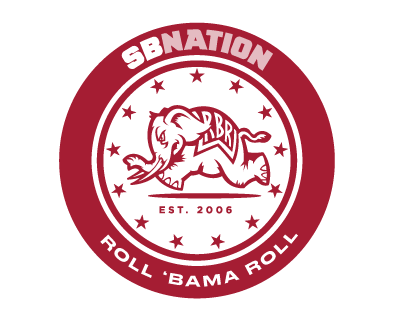
For the better part of two decades, the Alabama Softball offense was predicated on small ball and “chaos on the base paths.” The name of the game was getting contact and moving runners over, forcing tough decisions from the infield, and just good ole’ fashioned manufacturing runs: steals, sacs, bunts, fielder choice noodlers.
The upside to this is that as a team, if you have a dominant ace in the circle and can teach fundamental bunting and running, you needn’t compete for star offensive players. Speed, solid fielding, and the ability to make contact matter far more to overall team success. It distracts pitchers, forces bad throws. It keeps infielders focused on where they’re going with the ball next rather than what’s happening in front of them.
And when it works, that small ball approach yields to a lot of hittable pitches and solid contact that can lead to extra bases. This is what it looks like when it’s executed to perfection. 2016 WCWS, Alabama trailing Arizona State 2-0:
The key to that sort of softball is and always was the slap bunt. And for 20 years, there was no greater disciple than Patrick Murphy.
But then in 2018, the NCAA completely changed the rules regarding slappers. I’m not going to reinvent the wheel here; others have done a great job explaining the slap bunt, its changes, and what it means:
The game of softball underwent a significant change in the summer when the NCAA Playing Rules Oversight Panel approved a new rule that overhauled the art of slap-hitting.
Batters are now prohibited from having any part of their foot touch the ground outside the batter’s box when bat-ball contact is made. If the rule is violated, it’s an automatic out.
Previously, a batter’s foot was able to step outside the box so long as part of it was touching the chalk.
“The change is supposed to ensure slappers do not gain an unfair advantage that other batters do not have by being allowed to contact the ball while outside the batter’s box,” it says on Referee.com.
Here’s a good visual of the change:
The result was immediate, but was not seen in batting average for the Tide, or total hits: Contact was still being made with the ball. No, it was the lack of chaos; it has simply not been there, or has been at-best erratic. In 2017, the last year under the old rules, the Crimson Tide was second in stolen bases in the SEC. The next year, implementing new slapper rules, Alabama fell all the way to 6th. That was not an aberration. Again in 2020 and 2022, the Tide would find itself sitting at in least middling position in stolen bases and stolen base attempts. From 2017 to 2022, the Alabama offense would go from 37th in SB to 97th.
And, it is no coincidence that in 2019 (54th) and 2021 (39th), when Alabama was able to get on board effectively and snatch extra bases, that it also won the SEC regular season crowns.
But even that alone is not the sole key to the offense.
Power is also required — getting those tasty eephuses you can bury in the brickyard; the pitches that arise from the threat of the slapper. And there too the Tide has seen a power outage of late.
Last season, for a small ball offense. Alabama was about as good as you could want to be on paper. It led the SEC in pitching; it was third in BA at .310; it was third in hits; third in drawing walks; third in total bases.
What it did not have, though, was power: a deficit that doom the Tide in the postseason. In the same 2018 to 2022, the Tide went from 18th in HR per game to 249th — its highest finish thereafter has been 62nd.
Alabama has been an outstanding program in OBP. The Tide have excellent plate discipline and draw a lot of walks. Again, a small ball team has to be able to keep an eye on the strike zone. And, going back to the earliest cumulative statistics I can find, the Tide have never finished lower than 20th in the nation in on-base.
But getting people on board isn’t enough either. Just as the lack of a slapper has done damage to the stealing game, it has affected the Tide’s offensive output in toto. Because, the death of the slapper has seen the Tide’s double play percentage skyrocket. Alabama went from from one of the best in the conference (.62) to one of its worst (1.37).
—
Putting it together, you have a team that draws a lot of walks and can make contact. It gets on base. But it’s also one that’s running less effectively overall, and as a result getting fewer distracted pitchers serving up meat, as well as one that is hitting into a lot more double plays. There simply is no “chaos on the base paths.”
So, what’s the answer here? We touched on this before Regional play began, but more than a face lift is needed. The offense simply has to modern-up. That requires recruiting for power and coaching velocity hitting: exit angles, exit velocity, bat speed.
The name of the game these days is power on both sides of the diamond. And until ‘Bama gets on board, then even its best seasons seem doomed to fall short, as it is a team playing softball from a different era against those who are not.

Loading comments...